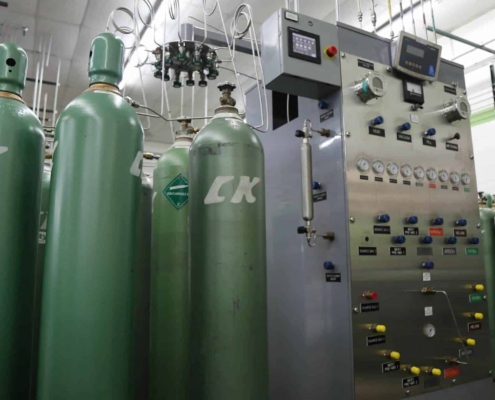As important oxygen is to support life on the planet, it is also a crucial element of many commercial and industrial processes, both as a gas and in a cryogenic liquid form.
Oxygen is commonly used in industrial processes to improve combustible materials, as it releases a lot of heat when it reacts.
Ozone (O3) is more reactive than ordinary oxygen and it is found naturally through electrical discharges from lighting. Large amounts of O3 are used for environmental and industrial treatment processes or added to air in small quantities to improve air quality and provide a “fresh air” scent.
Welding and Metal Fabrication
Oxygen can be combined with shielding gasses to enhance arc stability and reduce the surface tension of molten steel. The most common use of oxygen in metal fabrication is in steel cutting, where the cutter creates a controlled reaction between oxygen and steel to form iron oxide, which can be described as a rapid, controlled rusting.
Steelmaking
The steel industry is one of the largest users of industrial oxygen to enrich air and increase combustion temperatures. The steelmaking process requires the use of blast furnaces and open hearth furnaces that require high temperatures. Oxygen is fed into the steel bath using a special lance that allows for the use of scrap steel in electric arc furnaces. Industrial oxygen is used to make and enrich other metals such as copper, lead, and zinc.
Chemical and Manufacturing
Oxygen is used as a raw material in many oxidation processes to create compounds for manufacturing such as ethylene oxide, hydrogen peroxide, nitric acid, and vinyl chloride. Oxygen is also used as a combustion agent in destroying hazardous waste materials in incinerators.
Healthcare
Used during surgeries, intensive care, and assisting with respiratory therapy, oxygen used in healthcare needs high standards of purity and handling to ensure the safety of patients and healthcare workers.





